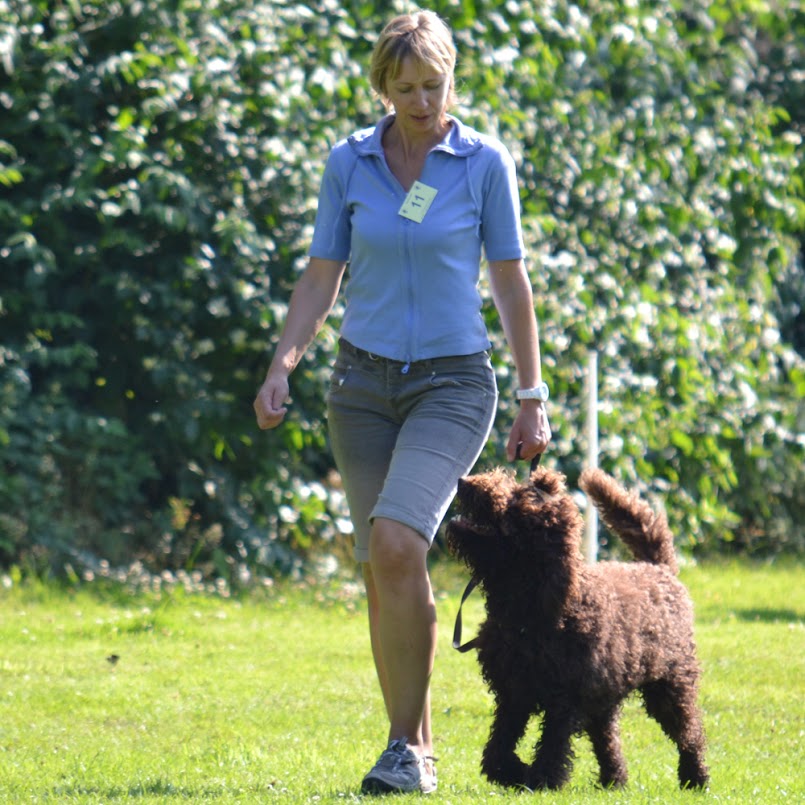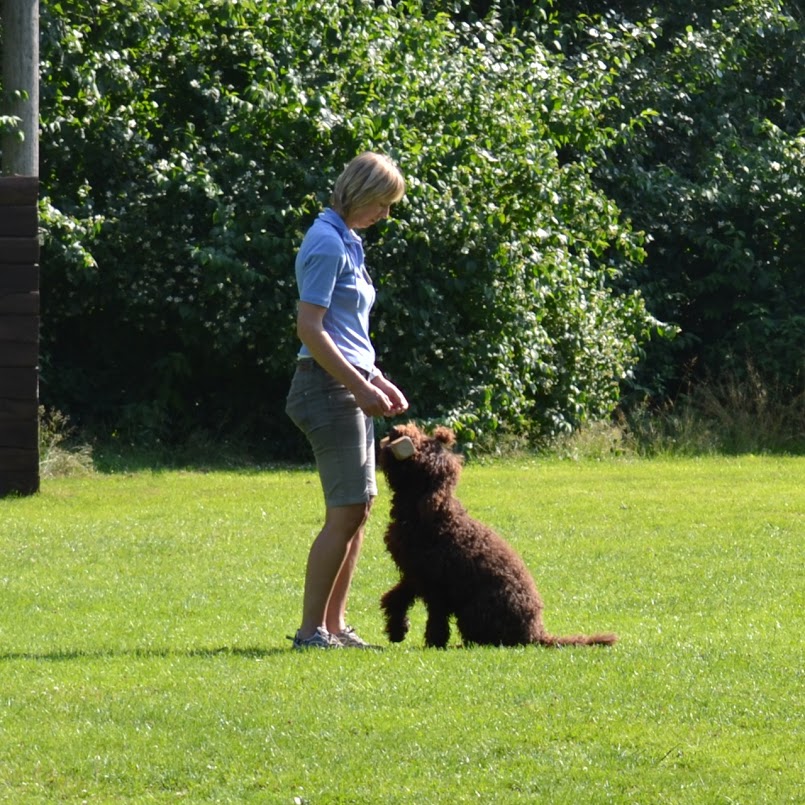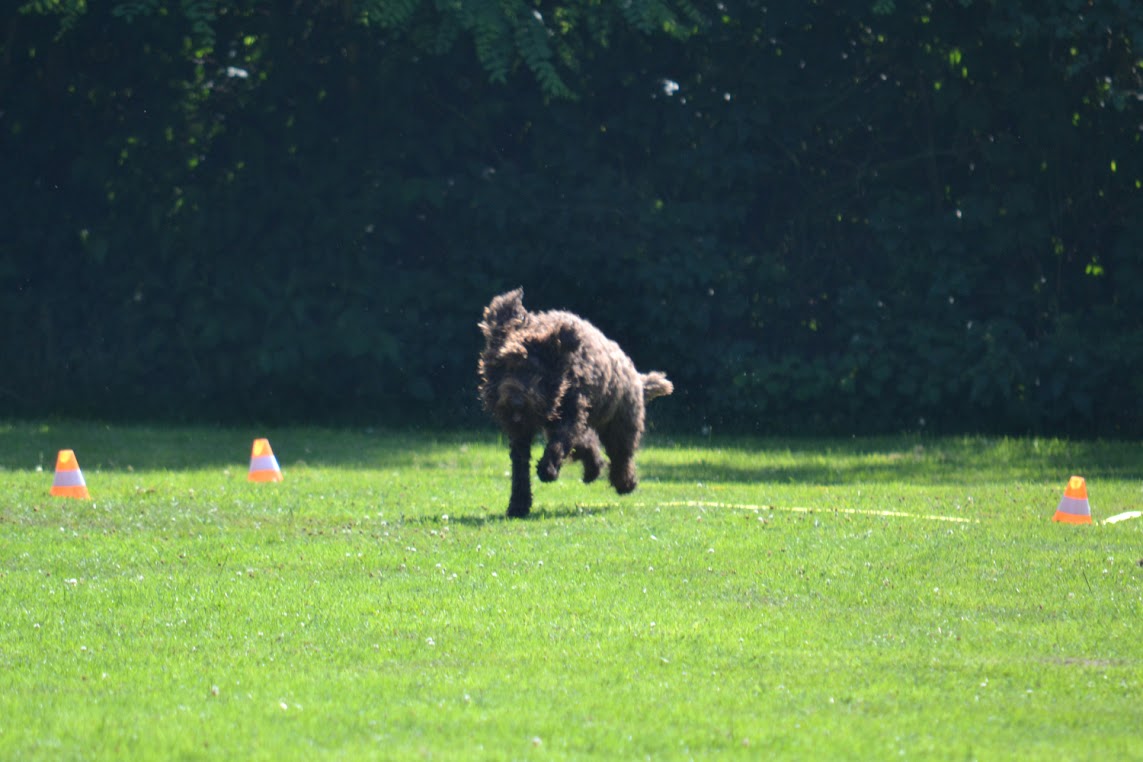On 6 July 2013, Bluna and I entered an obedience trial competition held by the Hovawart-Club in Wesel. The weather was beautiful, and Bluna was allowed to cool her paws in the river Issel on a regular basis. Thus a cheerful, good-mooded team came first in the beginner class with a total of 262.5 points (which is an excellent) — and now we can start in the next higher level, class 1.

We actually encountered the dog sport obedience more or less by chance. When we got our Barbet puppy, a friend of ours recommended a puppy school whose owner is very active in obedience trials From 2007 to 2012, she participated every year at the German Obedience championships and World Cup – Obedience, as well as 2008 to 2010 at German Championships in VPG sport (Schutzhund: German for “protection dog”) .

However, what exactly is obedience trial?
Obedience trials demonstrate the perfect partnership between dog and handler, they show the dog’s ability to follow the handler’s commands. The dog has to obey guestures or commands at once in the most ideal way. This requires a great willingness on the part of the dog to ‘read from his handlers lips’ and the ability of the handler to focus completey on his own guestures and commands.
The exercise ‘shall combine the utmost in willingness, enjoyment and precision on the part of the dog with naturalness, gentleness and smoothness on the part of the handler.’ (Obedience Regulations, p. 30)
Lack of willingness and enjoyment on the part of the dog as well as lack of precision in the dog’s performance, and roughness in handling, military precision or harsh commands by the handler must be penalized (compare Obedience Regulations, p. 30)
In Germany, participants start in four Classes from beginner to class 3 (FCI ). Obedience has been very popular in many countries such as Scandinavia, the Netherlands, Switzerland and Austria for a long time already. In Germany this sport gets more and more popular and holds a strong position compared to other sports, such as protection dog sports and agility.
The exercises of obedience trial include:
• heel: on and off the leash, following the ring steward’s commands
• sit, down and stand
• sending the dog into a square
• retrieve on the flat
• jump, retrieve over high jump
• distance control (sit, down, stand from a distance)
• scent discrimination
In order to be allowed to participate in an obedience trial, it is necessary to pass the companion dog test. Bluna and I successfully passed this test in April 2012. Our first obedience tournament took place in October 2012 and we got the mark ‘very good’. In May 2013, the next trial took place at our club – Hovawartfreunde Schleswig-Holstein e.V. I was striving for an ‘excellent’, which would allow Bluna and me to start in class 1.

Despite adverse conditions with torrential downpours, we participated. It was our first trial on a foreign ground and the deficits that we had not noticed in our training, immediately became apparent. Thus Bluna ran after me in the group exercise, which meant zero points for the entire exercise.

The next few weeks we worked hard on this problem and were able to show in Wesel that a Barbet is very suitable for the dog sport obedience trial. Being a gun dog, the Barbet has a lot of drive, loves retrieving, has an ability to detect scent and a willingness to listen to its master. These qualities qualify the Barbet to be very good in obedience trial. From my own experience I can add that this kind of sport is fun for the dog and the owner, therefore, I would recommend every Barbet owner to give it a try!
Article above is from Wookieebev